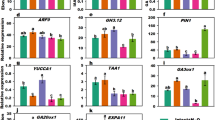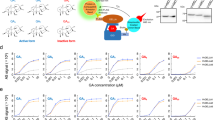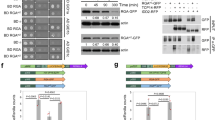Abstract
THE presence of gibberellin-like substances in floral parts (petals plus ovary)1 and demonstrations that gibberellic acid (GA3) can promote the growth of sepals and petals1,2 have indicated that gibberellins are involved in the growth of flowers. Further evidence, presented here, indicates that in carnation the application of GA3 diverts assimilates to the flower and hastens development towards anthesis.
This is a preview of subscription content, access via your institution
Access options
Subscribe to this journal
Receive 51 print issues and online access
$199.00 per year
only $3.90 per issue
Buy this article
- Purchase on SpringerLink
- Instant access to full article PDF
Prices may be subject to local taxes which are calculated during checkout
Similar content being viewed by others
References
Jeffcoat, B., Scott, M. A., and Harris, G. P., Ann. Bot., 33, 515 (1969).
Blake, J., J. Exp. Bot., 20, 113 (1969).
O'Brien, T. P., and Wardlaw, I. F., Austral. J. Biol. Sci., 14, 361 (1961).
Seth, A. K., and Wareing, P. F., J. Exp. Bot., 18, 65 (1967).
Harris, G. P., and Scott, M. A., Ann. Bot., 33, 143 (1969).
Author information
Authors and Affiliations
Rights and permissions
About this article
Cite this article
HARRIS, G., JEFFCOAT, B. & GARROD, J. Control of Flower Growth and Development by Gibberellic Acid. Nature 223, 1071 (1969). https://doi.org/10.1038/2231071a0
Received:
Issue date:
DOI: https://doi.org/10.1038/2231071a0



